
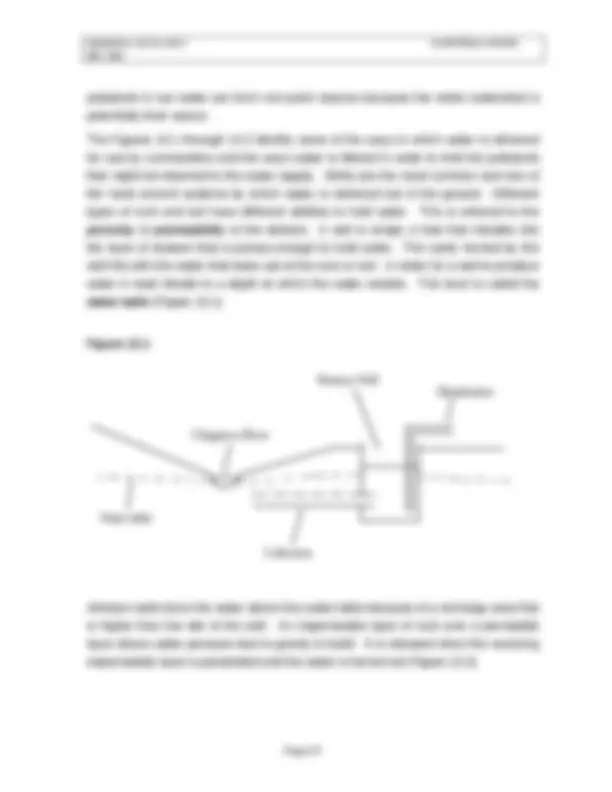
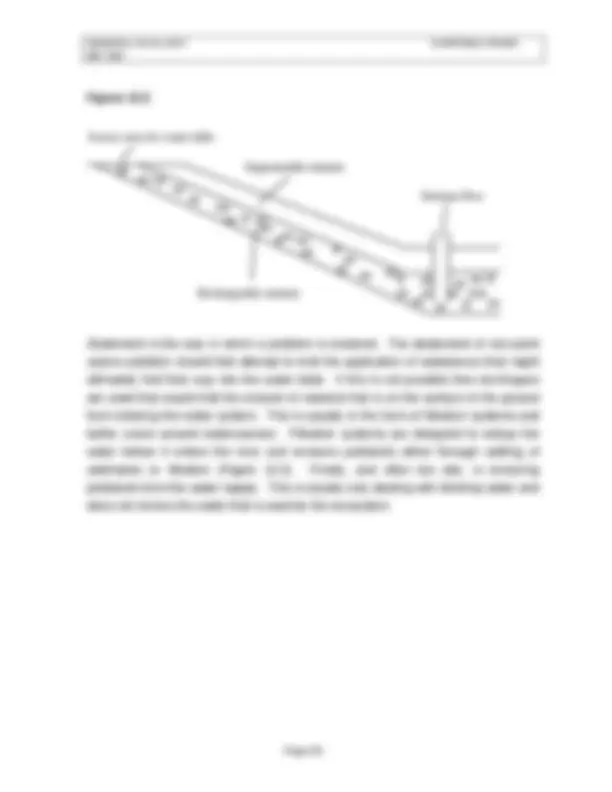
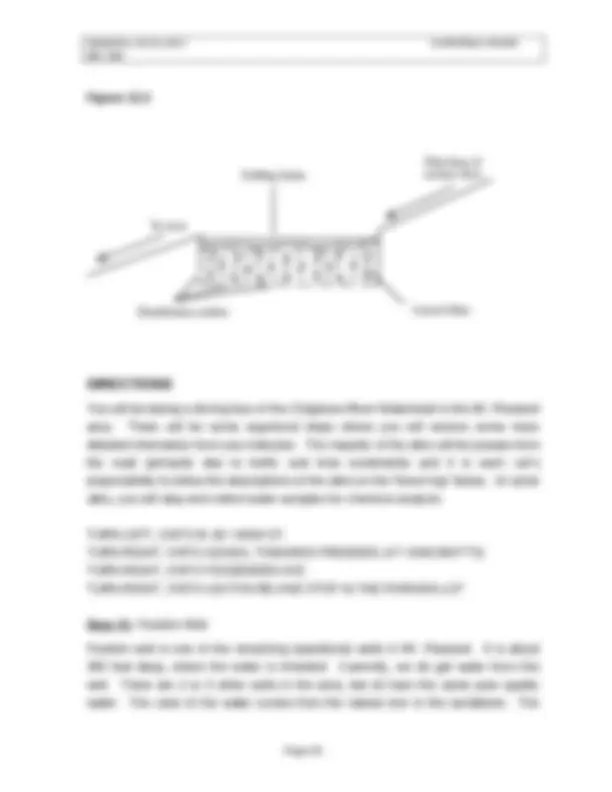
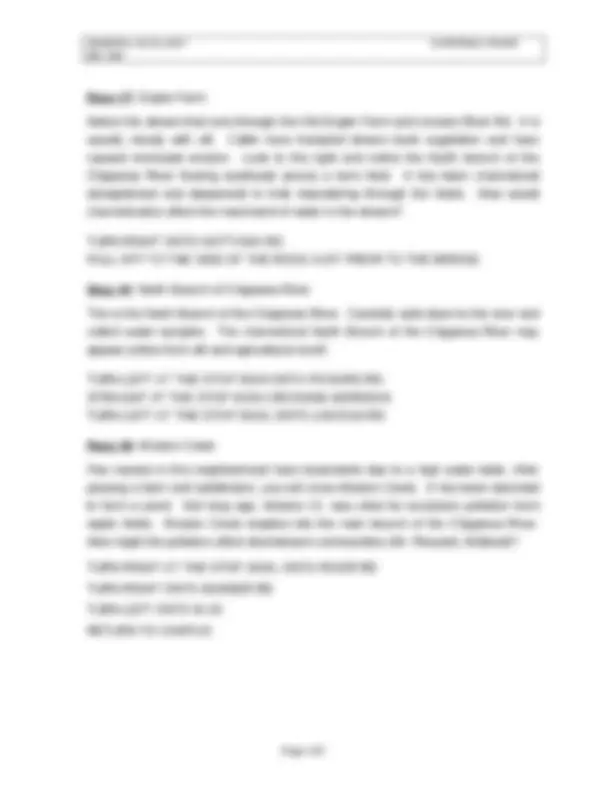
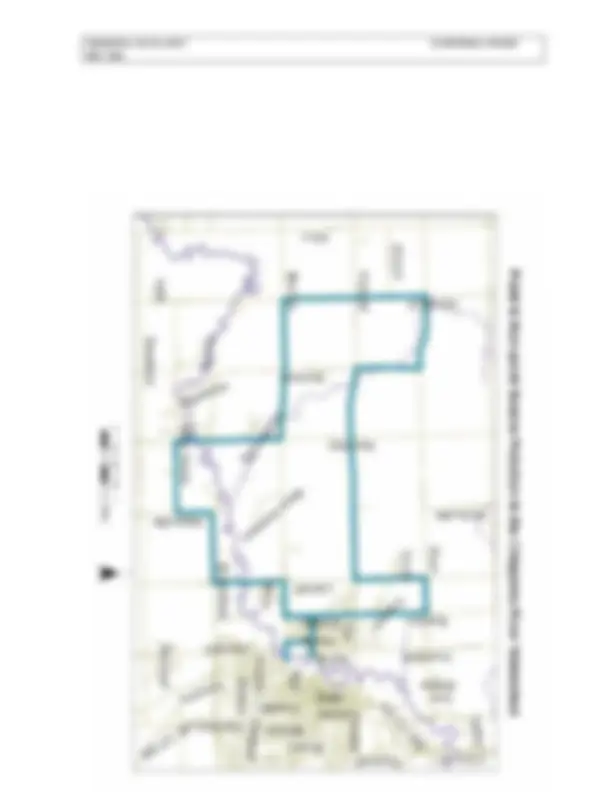
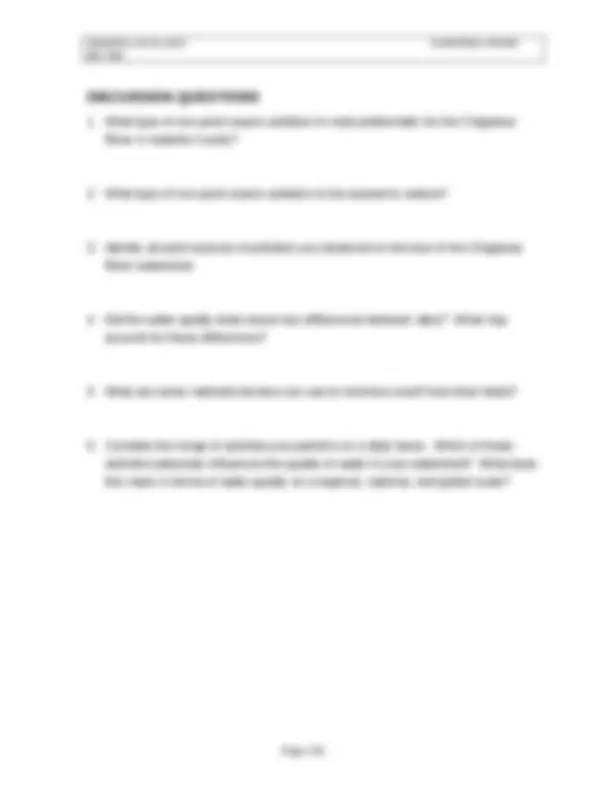


Study with the several resources on Docsity

Earn points by helping other students or get them with a premium plan


Prepare for your exams
Study with the several resources on Docsity

Earn points to download
Earn points by helping other students or get them with a premium plan
Community
Ask the community for help and clear up your study doubts
Discover the best universities in your country according to Docsity users
Free resources
Download our free guides on studying techniques, anxiety management strategies, and thesis advice from Docsity tutors
Material Type: Lab; Class: Ecology; Subject: Biology; University: Central Michigan University; Term: Unknown 1989;
Typology: Lab Reports
1 / 11

This page cannot be seen from the preview
Don't miss anything!







BIO 340
Rivers, lakes and wetlands are easily identifiable components of the landscape. Historically, they have been studied as isolated freshwater ecosystems, separate from the landscape around them. Today, we recognize that they are intricately bound to the landscape. Rainwater hitting the ground eventually flows or seeps into a stream, lake, or wetland. This rainwater carries with it the products of the landscape including nutrients, pollution, and sediment. The Chippewa River, as it flows through Isabella County, is impacted by all of the land surrounding it. Human practices such as agriculture, construction, industry and habitation all produce materials that ultimately can impact the river. In today’s lab, we will tour the Chippewa River watershed and observe how human activities on the land influence the quality of the river ecosystem.
In today's lab you will
Be able to define the following terms. riparian siltation ground water aquifer erosion hydrology watershed surface water porosity non-point source pollution runoff seepage point source pollution water table
BIO 340
"Everybody lives downstream!", is a phrase that is intended to point out the fact that, since the hydrological cycle is a closed loop, no one truly resides at the beginning of the system. Towns situated on rivers are downstream of other towns above them. Even mountainous areas receive their rainfall from water evaporated in the lowlands. The message being sent in this slogan is that whatever is done that might affect the water quality at some point in the system will be felt at all other points along the line. Consequently, activities on the land that might not seem to have a direct connection to a water source often have significant impacts on water quality. There is a simple reason for this relationship. Precipitation falling on the earth's surface, that does not evaporate or become absorbed by the soil, usually drains over the land or through the soil into streams, rivers, lakes, marshes and ultimately the ocean. This water is referred to as runoff. The lakes, streams and marshes are considered surface water. Some water becomes trapped in underground reservoirs ( aquifers ) and is referred to as ground water. The surface of the land that drains to a common point (usually a river or stream) is called a watershed. Watersheds can be small, such as the area drained by the ditch running through the old field at Veit's Woods or large such as the area drained by the Mississippi River. As the water flows over and through the soil it picks up substances, some of which become dissolved in the water and some of which are simply suspended in the water and deposited when it stops. Because of this, any activity or event that exposes the earth to rainwater is contributing to the load of material carried to freshwater systems. This study of the movement of water and its properties is called hydrology. It should be apparent that virtually any activity has the potential to introduce foreign substances into the water. Material generated from human activity that is considered harmful in any way is referred to as pollution. Material that has an identifiable source such as a spill or leak is referred to as point source pollution. Leaky pipes, industrial effluent or chemical waste sites are easy to pinpoint and address. Materials that are washed off roads, parking lots and farmer’s fields are much harder to identify and even more difficult to prevent. These materials are referred to as non-point source pollution. Non-point source pollution is difficult to identify and control because of its insidious nature. Unfortunately, the largest majority of
BIO 340 Figure 13. Source area for water table Rechargeable stratum Artesian flow Impermeable stratum Abatement is the way in which a problem is resolved. The abatement of non-point source pollution should first attempt to limit the application of substances that might ultimately find their way into the water table. If this is not possible then techniques are used that would limit the amount of material that is on the surface of the ground from entering the water system. This is usually in the form of filtration systems and buffer zones around watercourses. Filtration systems are designed to entrap the water before it enters the river and removes pollutants either through settling of sediments or filtration (Figure 13.3). Finally, and often too late, is removing pollutants from the water supply. This is usually only dealing with drinking water and does not involve the water that is used by the ecosystem.
BIO 340 Figure 13. Distribution outlets Direction of Settling basin surface flow Gravel filter To river
You will be taking a driving tour of the Chippewa River Watershed in the Mt. Pleasant area. There will be some organized stops where you will receive some more detailed information from you instructor. The majority of the sites will be passes from the road (primarily due to traffic and time constraints) and it is each car's responsibility to follow the descriptions of the sites on the "travel log" below. At some sites, you will stop and collect water samples for chemical analysis. TURN LEFT, ONTO M-20 / HIGH ST. TURN RIGHT, ONTO ADAMS, TOWARDS FREDDIES (AT ASHCRAFT'S) TURN RIGHT, ONTO FESSENDEN AVE TURN RIGHT, ONTO LEATON RD AND STOP IN THE PARKING LOT Stop #1: Franklin Well Franklin well is one of the remaining operational wells in Mt. Pleasant. It is about 350 feet deep, where the water is inherited. Currently, we do get water from this well. There are 2 or 3 other wells in the area, but all have the same poor quality water. The color of the water comes from the natural iron in the sandstone. The
BIO 340 TURN RIGHT ONTO MERIDIAN Pass #5: Meridian Rd. development From the stop sign down to the river is the seepage area through which water flows into the river. Since it is a seepage area, the water table is high. This is an affluent neighborhood and a popular place to live. Most of the houses have septic fields just above the seepage area. How might septic fields influence water quality at this site? TURN RIGHT INTO MERIDIAN PARK Stop #2: Meridian Park Chippewa River contains a diversity of fishes including hornyhead chubs, rock bass, smallmouth bass, suckers and darters. Drive down to the river and collect a water sample. How do the chemical parameters differ from those of the previous samples? TURN RIGHT OUT OF THE PARK Pass #6: North Branch of Chippewa R. The North branch of the Chippewa River goes through agricultural areas prior to this point, picking up silt from erosion and chemicals from farmers' fields. Notice the clarity of the water. How might this influence water quality in the main branch of the Chippewa River? TURN LEFT ONTO M-20 (CROSS THE CHIPPEWA AGAIN) TURN RIGHT ONTO VANDECAR (INTO THE AGRICULTURAL AREAS) STRAIGHT AT THE STOP SIGN AND CROSS PICKARD STOP AT THE NEXT STOP SIGN (RIVER RD.) Stop #3: Hogg’s Creek Tile Drain Hogg's Creek tile drain is an outlet for water that has accumulated in ceramic tiles underneath farm fields. Hogg’s Creek empties into the North Branch of the Chippewa River. Whether it has rained or not, water always drains from the fields. Stop and collect a water sample from the drainage tile. What chemicals would you expect to find in Hogg’s Creek water? TURN RIGHT ONTO RIVER ROAD
BIO 340 Pass #7: Engler Farm Notice the stream that runs through the Old Engler Farm and crosses River Rd. It is usually cloudy with silt. Cattle have trampled stream bank vegetation and have caused increased erosion. Look to the right and notice the North branch of the Chippewa River flowing southeast across a farm field. It has been channelized (straightened and deepened) to limit meandering through the fields. How would channelization affect the movement of water in the stream? TURN RIGHT ONTO NOTTAWA RD PULL OFF TO THE SIDE OF THE ROAD JUST PRIOR TO THE BRIDGE. Stop #4: North Branch of Chippewa River This is the North Branch of the Chippewa River. Carefully walk down to the river and collect water samples. The channelized North Branch of the Chippewa River may appear yellow from silt and agricultural runoff. TURN LEFT AT THE STOP SIGN ONTO PICKARD RD STRAIGHT AT THE STOP SIGN CROSSING MERIDIAN TURN LEFT AT THE STOP SIGN, ONTO LINCOLN RD Pass #8: Mission Creek Few houses in this neighborhood have basements due to a high water table. After passing a barn and subdivision, you will cross Mission Creek. It has been dammed to form a pond. Not long ago, Mission Cr. was cited for excessive pollution from septic fields. Mission Creek empties into the main branch of the Chippewa River. How might the pollution affect downstream communities (Mt. Pleasant, Midland)? TURN RIGHT AT THE STOP SIGN, ONTO RIVER RD TURN RIGHT ONTO BAMBER RD TURN LEFT ONTO M- RETURN TO CAMPUS
BIO 340
BIO 340 Water Quality Data for Chippewa River Watershed: Site Phosphorus Nitrate Alkalinity Dissolved Oxygen Franklin well Mill pond park Meridian Park North Branch Hogg Creek